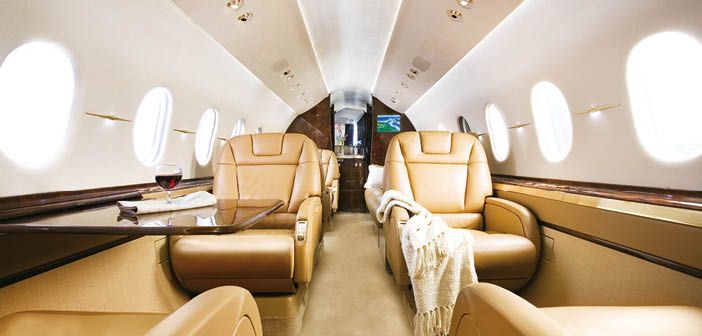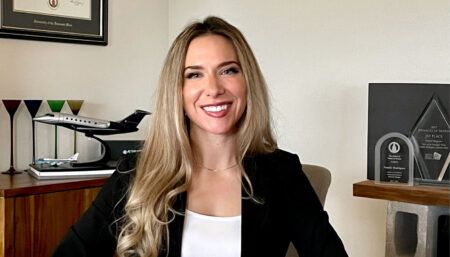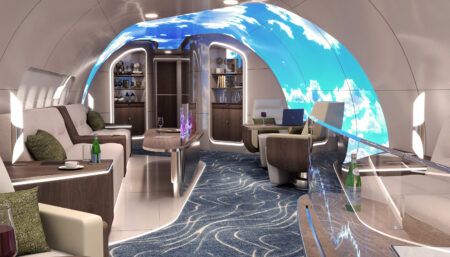Sean McGeough of Hawker Beechcraft Corporation (HBC) discusses options for Europe’s ageing business jets
 What does HBC’s latest research reveal about the age of Europe’s business jet fleet?
What does HBC’s latest research reveal about the age of Europe’s business jet fleet?
HBC analysed JetNet data for pistons, turboprops and business jets in Europe that were active/in service. Only countries with a minimum of 30 active business aircraft have been analysed separately.
The research revealed that the average age of European business aircraft is 13 years and that one in six (17%) of all business aircraft in Europe are at least 30 years old.
The analysis also showed that Germany has cemented its position as having the largest European fleet, with a base of 753 aircraft. Sweden and the Isle of Man are at opposite ends of the age bands – Sweden has the oldest business aircraft of any European fleet, with an average age of 20 years, while the Isle of Man has the youngest with an average age of just six years. This is followed closely by Portugal, with an average age of just eight years.
When it comes to Europe as a whole, 296 aircraft could be retired in the next five years as they reach the end of their economically viable lifespan.
What is the life expectancy of a typical business jet?
Each case is different and the value to each aircraft owner of the various options can change with their individual requirements. One of the main factors as aircraft age is that the increase in unscheduled maintenance requirements means an increase in aircraft downtime. Some studies (in particular, estimates of in-service rates by Conklin & de Decker) have shown that whereas an aircraft up to 20 years of age is likely to only spend 5% of its year in maintenance, a 25-year-old aircraft will be unavailable through maintenance for 25% of the time, and a 30-year-old aircraft could spend 45% of its time in maintenance.
 Above: A Hawker 900XP interior
Above: A Hawker 900XP interior
What are commonly the first things to need replacing?
Depending upon how well it is maintained, the interior of a business jet can last up to 10 years or more. It is not uncommon to replace soft goods (seat upholstery, carpet, etc.) in the 5-8-year time frame. Often, changes are driven by technology and style upgrades and can coincide with major maintenance intervals.
What are the advantages of a new interior as opposed to a refurbished one?
A new interior in an existing aircraft is typically referred to a ‘recompletion’. In this case, the old interior is completely removed and all new components are installed. The advantages range from fully integrated technology to state-of-the-art materials and manufacturing methods, to acoustic treatment enhancements. The result is a completely integrated design and installation, which can closely resemble that of a new production aircraft interior. However, for those opting for a pre-owned aircraft, they can be reassured that they go through a rigorous multipoint evaluation by our trained maintenance experts, further guaranteeing the used aircraft investment.
At what point is an aircraft beyond patching up?
This varies greatly and is driven by the economics of the situation. If the aircraft will cost more to upgrade or repair than it will be worth once complete, it is not financially feasible to perform the work. There are occasions when the owner of the aircraft is more interested in keeping his/her aircraft than the financial equation.
What happens when a business jet is scrapped?
Many portions of an aircraft can be recycled or ‘parted out’. There are companies who specialise in this area.
What are some of the oldest business jets currently flying?
This year is the 50th anniversary of the Hawker 125, one of the world’s first business jets, making its maiden voyage – we will be holding a variety of activities to celebrate this. The strong mechanics and the quality of the original design of this machine mean that today there are 45 of those early-model 125s still in operation.
Of the European aircraft due for retirement, how many would you expect to be replaced by new-build aircraft? And how much of that business does HBC expect?
HBC estimates 296 aircraft in the European business aviation segment could be retired over the next five years. This equates to around 7% of the total European fleet and could lead to a significant increase in demand for new business aircraft as companies and individuals look to replace their ageing aircraft.
Our current European market share within our competitive segments stands at 25% (including both business jets and turboprops) and we are confident that with our current aircraft line-up we can maintain and even increase this share.
 Above: A Hawker 400XP interior
Above: A Hawker 400XP interior
How are you gearing up to be able to react to increased demand?
We continually focus on ensuring that we have the right people in the right places to meet demand. HBC has full refurbishment and recompletion capabilities at several of our existing Hawker Beechcraft Services (HBS) facilities. For example, our Chester, UK, facility has space, equipment and a highly skilled workforce already engaged in many refurbishment projects. With the existing capacity within HBC and HBS, we are well positioned to satisfy increased demand.
How are your latest interiors suited to the European market?
Aircraft interior tastes and preferences are as unique as our individual customers. With our ‘Simple Elegance’ approach to aircraft interior design, our interiors are well suited to the European market. We have hundreds of aircraft operating throughout Europe and each one is a reflection of the owner’s personality.
Sean McGeough is Hawker Beechcraft Corporation (HBC) president for Europe, Middle East and Africa
Main image: A Hawker 4000 interior





